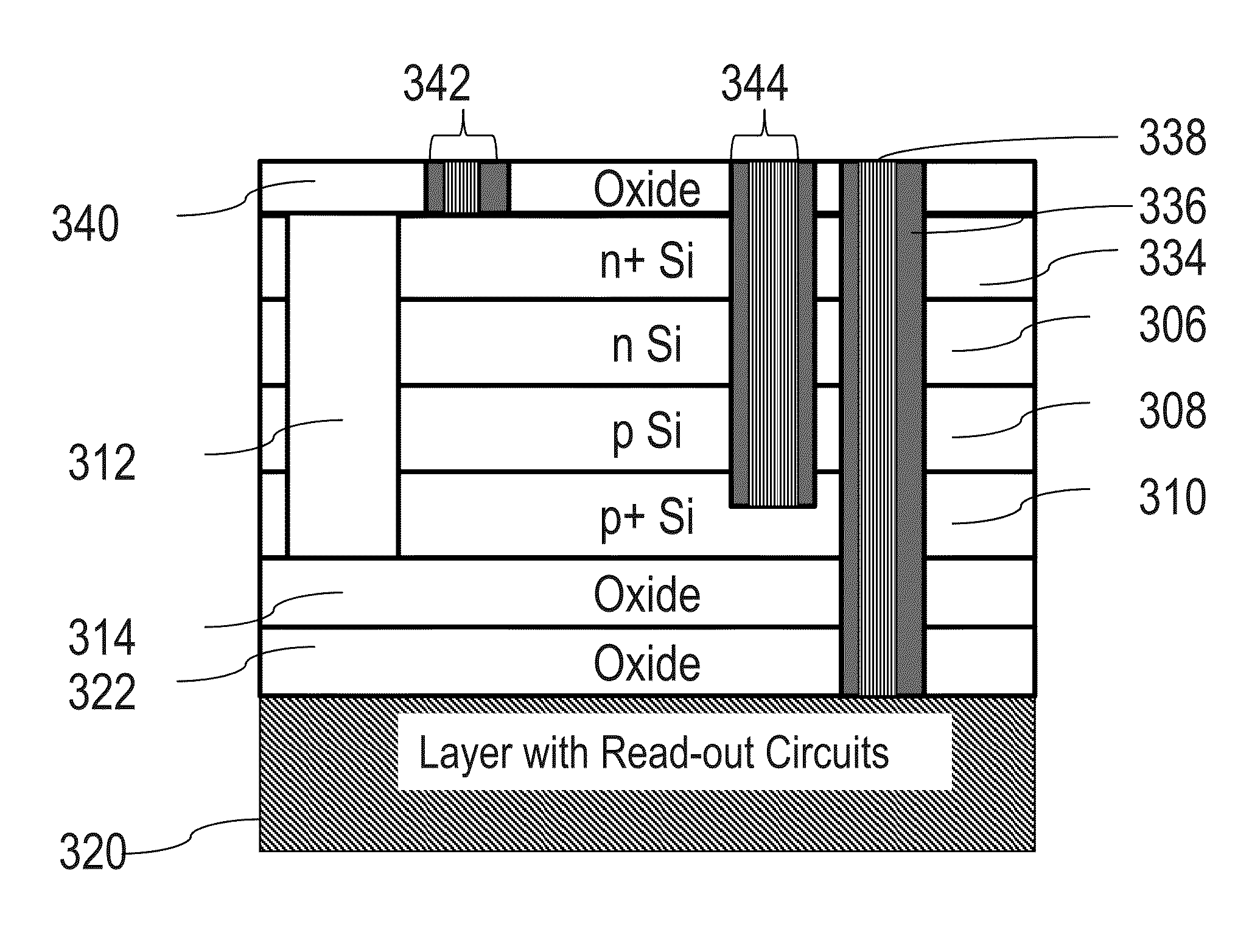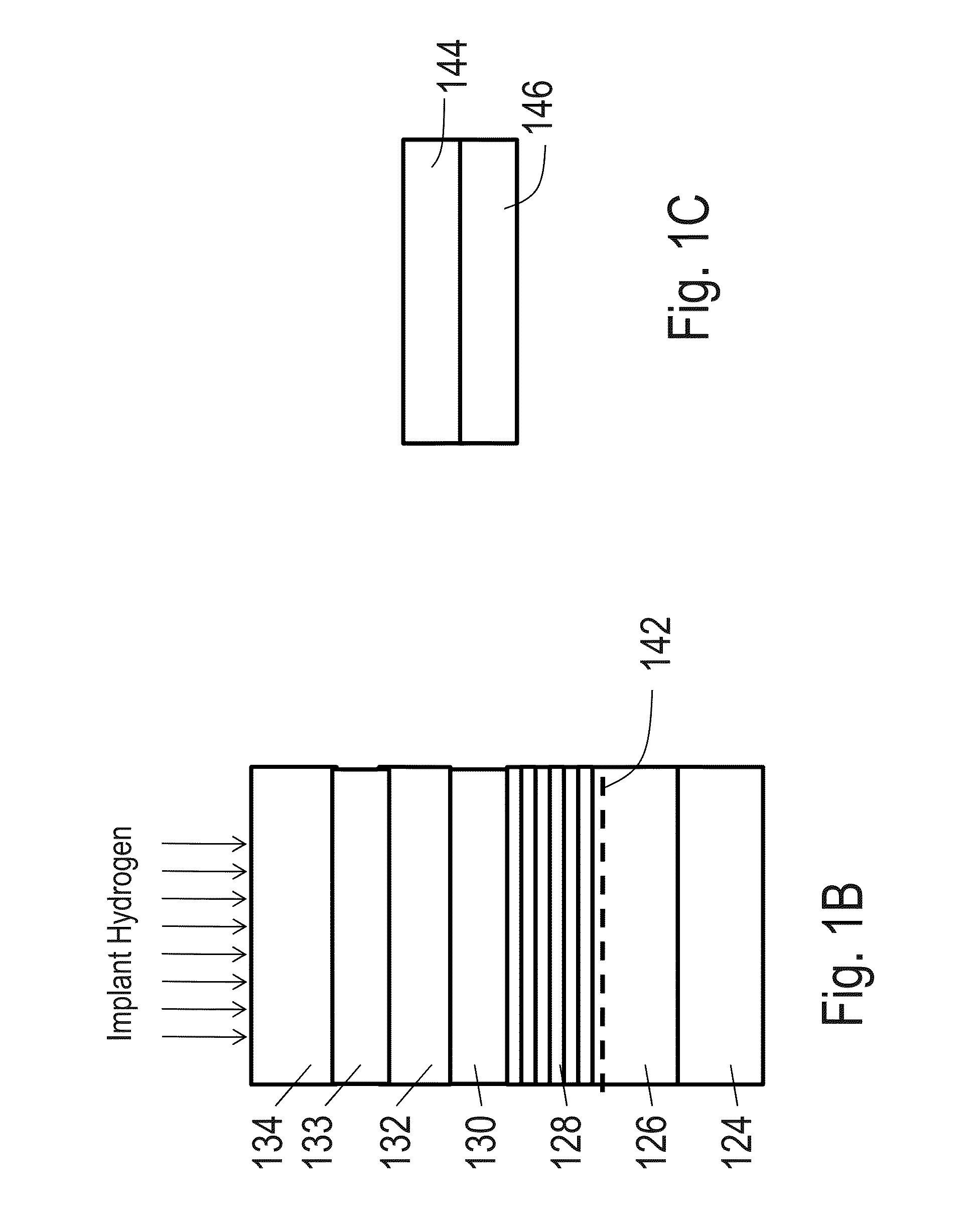SEMICONDUCTOR AND OPTOELECTRONIC METHODS and DEVICES
a technology of optoelectronic and semiconductor devices, applied in semiconductor devices, television systems, radio frequency controlled devices, etc., can solve the problems of less efficient mixing of red, blue and green colors to form white light, much more expensive than pcleds, and rgb-led is still much more expensive than a pcled solution
- Summary
- Abstract
- Description
- Claims
- Application Information
AI Technical Summary
Benefits of technology
Problems solved by technology
Method used
Image
Examples
Embodiment Construction
[0097]Embodiments of the present invention are now described with reference to FIGS. 1-25, it being appreciated that the figures illustrate the subject matter not to scale or to measure.
NuLED Technology:
[0098]FIG. 1A-S illustrate an embodiment of this invention where Red, Blue, and Green LEDs are stacked on top of each other with smart layer transfer techniques. A smart layer transfer may be defined as one or more of the following processes:[0099]Ion-cut, variations of which are referred to as smart-cut, nano-cleave and smart-cleave: Further information on ion-cut technology is given in “Frontiers of silicon-on-insulator,” J. Appl. Phys. 93, 4955-4978 (2003) by G. K. Celler and S. Cristolovean (“Celler”) and also in “Mechanically induced Si layer transfer in hydrogen-implanted Si wafers,” Appl. Phys. Lett., vol. 76, pp. 2370-2372, 2000 by K. Henttinen, I. Suni, and S. S. Lau (“Hentinnen”).[0100]Porous silicon approaches such as ELTRAN: These are described in “Eltran, Novel SOI Wafer...
PUM
 Login to View More
Login to View More Abstract
Description
Claims
Application Information
 Login to View More
Login to View More - R&D
- Intellectual Property
- Life Sciences
- Materials
- Tech Scout
- Unparalleled Data Quality
- Higher Quality Content
- 60% Fewer Hallucinations
Browse by: Latest US Patents, China's latest patents, Technical Efficacy Thesaurus, Application Domain, Technology Topic, Popular Technical Reports.
© 2025 PatSnap. All rights reserved.Legal|Privacy policy|Modern Slavery Act Transparency Statement|Sitemap|About US| Contact US: help@patsnap.com



